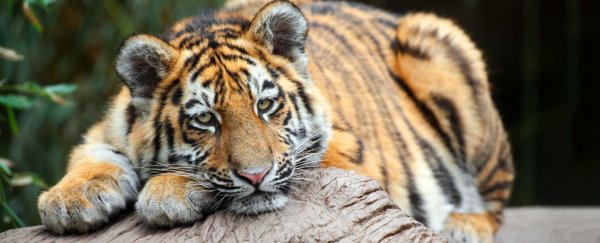Rolling back a decades-old ban, the Chinese government will permit the use of rhino horn and tiger bone for use in traditional Chinese medicine, in a move that conservation groups warned could devastate the dwindling species.
China's State Council said Monday it would legalize the trade of rhino and tiger parts sourced from farmed animals, partially reviving a lucrative market that Beijing had officially shut down in 1993.
China did not relax restrictions on animal parts from wild sources or their import and export - which remain prohibited under international conventions.
But any resumption of domestic trade in China's enormous market could have "devastating consequences" for rhinos and tigers in the wild, conservation groups warned, because of the difficulty in differentiating between poached and farmed animals.
"Not only could this lead to the risk of legal trade providing cover to illegal trade, this policy will also stimulate demand that had otherwise declined since the ban was put in place," said Margaret Kinnaird, wildlife practice leader at the World Wildlife Fund.
Rhino and tiger parts have been prized for centuries in traditional Chinese medicine for purported effects curing issues including impotence, fever and inflamed joints.
A black market for the ingredients, which can fetch soaring prices, has continued to thrive in China despite the 1993 ban and perennial ad campaigns by conservation groups featuring Chinese celebrities such as Yao Ming, the former professional basketball star.
Fewer than 4,000 tigers are believed to be left in the wild, down from 100,000 a century ago. The Asian rhino population has fallen to 4,000, and African rhinos, which have been hard-hit by poaching, now number about 25,000.
Conservation groups say they were stunned by China's reversal, given President Xi Jinping's heartening position on curbing climate change and banning ivory sales last year.
Chinese action on both fronts was praised internationally as a sign that Beijing would assume leadership and responsibility regarding global problems.
Peter Knights, chief executive of WildAid, said the new policy comes as a "shock" just as rhino horn prices have fallen by two-thirds and poaching levels are declining.
"If this new policy ends in commercial sales and plays out similarly to when ivory was legalized, poaching will skyrocket as traders look to increased demand and the ability to launder horn," he said.
The policy revision also runs counter to moves by traditional Chinese medicine groups to throw their weight behind conservation.
In the wake of the animal parts ban in 1993, medical authorities removed tiger and rhino ingredients from their official pharmacopeia, and during a 2010 symposium in Beijing, the World Federation of Chinese Medicine Societies urged its members to do their part to save endangered species.
That history suggests it is unlikely that Chinese medicine doctors were actively pushing for a revival in the animal parts trade.
Instead, conservation groups surmise that the policy will benefit China's industry of tiger farms and rhino ranches, which have flourished outside the scope of official sanctions.
More than 6,000 tigers were estimated to be living on Chinese farms as of 2010, up from 600 in 2002, WWF policy director Leigh Henry said.
Reversing the tiger and rhino parts ban "seems slightly illogical, based on everything else we've seen from China recently," Henry said.
"The pressure is likely coming from those who stand to profit from the farms."
2018 © The Washington Post
This article was originally published by The Washington Post.
